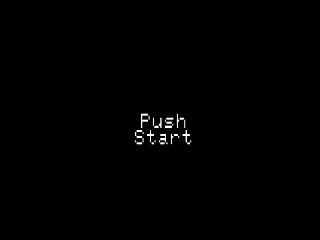Difference between revisions of "Dottori Kun"
From Sega Retro
m |
|||
| Line 18: | Line 18: | ||
==History== | ==History== | ||
| − | + | {{quote|In the 1990s, a big part of [[Sega]]’s arcade business was selling cabinets like the [[Astro City]] that didn’t come with game boards included. ''Dottori-kun'' seems to exist primarily to provide a simple game that could be used for assessment in line with Japanese law. It was included with the cabinet as sold (likely because the cabinet had to be in the same state as assessed for it to be valid), but was not usable for an arcade operator beyond basic testing that the game board worked, it would just be thrown away or maybe saved to be scavenged for parts.|''Game author Nicole Branigan on Dottori-kun's inception''|ref={{ref|https://nicole.express/2021/a-lot-of-effort-for-dots.html}}}} | |
==Photo gallery== | ==Photo gallery== | ||
Revision as of 00:36, 27 March 2022
This short article is in need of work. You can help Sega Retro by adding to it.
Dottori Kun (ドットリ君) is an arcade maze game developed and manufactured by Sega. A significantly-downscaled port of the company's popular game Head On, it was created in response to Japan's Electrical Appliance and Material Control Law which required arcade cabinets to include a working arcade game at point of sale[1][2][3], and was included in Sega's JAMMA-compatible arcade machines as early as 1990. As Dottori Kun was designed to be both inexpensive and disposable[4], very few copies of the game have ever seen the arcade floor - most boards are presumed to have been thrown out or salvaged for spare parts.[1]
Contents
Gameplay
Gameplay is very similar to Head On. The basic goal of this game is that you are the arrow and you must go around the field collecting the dots and avoiding the X. The only movement restriction is that you cannot turn 180°, and if you hit a corner, the game will automatically turn you. There are two buttons. Button 1 will cause you to move faster when held. Button 2 pauses/unpauses. Hitting the X will kill you and you will have to start back at the first "level". Every few levels, another X joins the board.
Hardware
As Dottori Kun was intended to both only meet the minimum legal requirement of a game and to be generally disposed of by operators after sale[1], the PCB uses the most barebones of components for the time, and therefore had a very low manufacturing cost. The PCB itself consists of only a 4Mhz Z80, very limited graphics capabilities (with a 256x192 resolution display capable of drawing three of eight colors), and no sound.[4]
History
| “ | In the 1990s, a big part of Sega’s arcade business was selling cabinets like the Astro City that didn’t come with game boards included. Dottori-kun seems to exist primarily to provide a simple game that could be used for assessment in line with Japanese law. It was included with the cabinet as sold (likely because the cabinet had to be in the same state as assessed for it to be valid), but was not usable for an arcade operator beyond basic testing that the game board worked, it would just be thrown away or maybe saved to be scavenged for parts. | „ |
— Game author Nicole Branigan on Dottori-kun's inception[1] | ||
Photo gallery
Dottori Kun on an Astro City cabinet.
Screenshots
External links
- A Lot of Effort to be Thrown Away: Sega's Dottori-kun! article by Nicole Branagan at Nicole Express
References
| Head On games or clones | |
|---|---|
| Head On (1979) | Head On 2 (1979) | Car Hunt (1979) | Counter Run (1988) | Dottori Kun (1990) | Head-On (2001) | Sega Fast Lane (2002) | Monita to Rimoko no Head On Channel (Unreleased) | |
| Head-On (Game Boy) (1990) | |






